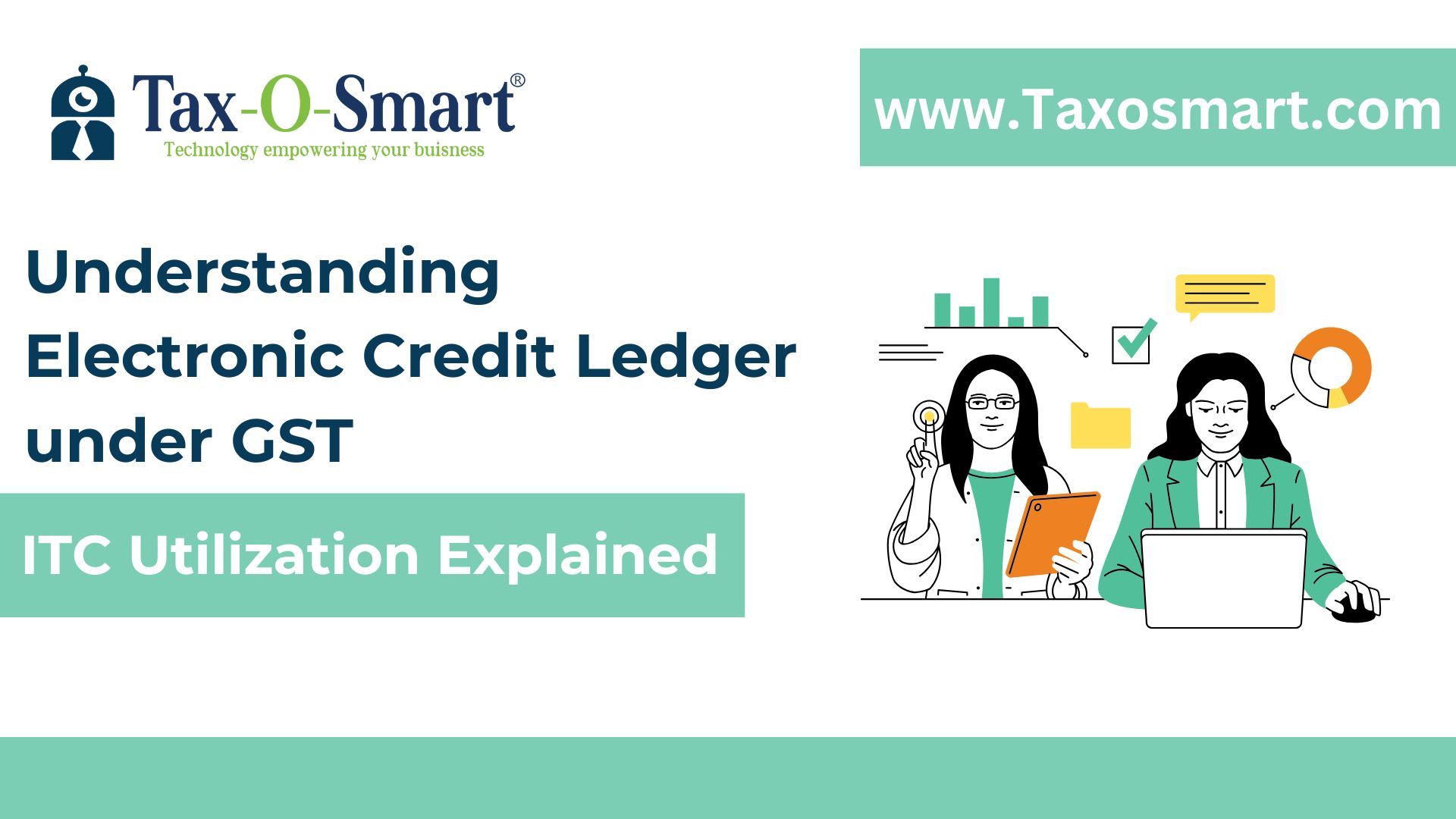
Understanding Electronic Credit Ledger under GST | ITC Utilization Explained
8 Jul 2025
Understanding Electronic Credit Ledger under GST | ITC Utilization Explained
With the digitization of tax systems in India, the Electronic Credit Ledger has become a vital component of the GST compliance ecosystem. Governed by Section 49(2) of the Central Goods and Services Tax (CGST) Act, 2017, it plays a major role in managing and utilizing Input Tax Credit (ITC).
In this article, we decode the concept, legal basis, utilization mechanics, and real-life use cases of the electronic credit ledger.
WHAT IS THE ELECTRONIC CREDIT LEDGER?
WHAT IS THE ELECTRONIC CREDIT LEDGER?
The Electronic Credit Ledger is an online ledger maintained on the GST portal. It reflects the input tax credit (ITC) that a registered taxpayer self-assesses in their GST returns. This ledger acts as a virtual wallet of credits which can be used to offset output GST liabilities, subject to certain rules and restrictions.
As per Section 2(46) of the CGST Act, the electronic credit ledger refers specifically to the one mentioned in Section 49(2), which outlines how ITC can be utilized to discharge GST dues.
KEY FEATURES OF THE ELECTRONIC CREDIT LEDGER
KEY FEATURES OF THE ELECTRONIC CREDIT LEDGER
1. Repository of Input Tax Credit
2. Utilization for Output Tax
3. Tax-Wise Segregation
4. Utilization Hierarchy as per Rule 88A
5. Seamless Digital Interface
PRACTICAL SCENARIOS
Here are some simplified real-world illustrations to understand how the electronic credit ledger operates:
Scenario 1: Regular Monthly Utilization
- Captures eligible ITC from inward supplies.
- Credits get posted automatically post-return filing.
- Updated in real-time on the GSTN portal.
2. Utilization for Output Tax
- Used primarily to pay off outward GST liabilities.
- Cannot be used for interest, penalties, or late fees.
- Utilization is restricted based on a prescribed conditions.
3. Tax-Wise Segregation
- The ledger tracks ITC under different heads being Central GST (CGST), State/UT GST (SGST/UTGST) and Integrated GST (IGST)
- Each credit type has specific utilization rules which are strictly enforced by the portal.
4. Utilization Hierarchy as per Rule 88A
- IGST credit: First toward IGST, then CGST and SGST (any order).
- CGST credit: Used for IGST and CGST only.
- SGST/UTGST credit: Can be utilized for SGST/UTGST and IGST, but not for CGST.
5. Seamless Digital Interface
- Fully integrated with the GST portal.
- Auto-adjusts ITC on filing of returns.
- Allows easy tracking of credit balance, usage, and refunds.
PRACTICAL SCENARIOS
Here are some simplified real-world illustrations to understand how the electronic credit ledger operates:
Scenario 1: Regular Monthly Utilization
A manufacturer has ₹70,000 CGST ITC. The output liability is ₹30,000 CGST and ₹40,000 SGST. The CGST credit covers only the CGST liability; it cannot be used for SGST payment.
Scenario 2: Inter and Intra-State Supply Mix
A trader holds ₹80,000 IGST and ₹50,000 CGST credit. Against a ₹50,000 IGST, ₹20,000 CGST, and ₹10,000 SGST liability, the IGST credit is first utilized to offset the IGST liability, and the remaining ₹30,000 is applied towards the CGST and SGST liabilities in any order. As a result, the entire IGST credit is exhausted, while the CGST credit remains untouched at ₹50,000.
Scenario 2: Inter and Intra-State Supply Mix
A trader holds ₹80,000 IGST and ₹50,000 CGST credit. Against a ₹50,000 IGST, ₹20,000 CGST, and ₹10,000 SGST liability, the IGST credit is first utilized to offset the IGST liability, and the remaining ₹30,000 is applied towards the CGST and SGST liabilities in any order. As a result, the entire IGST credit is exhausted, while the CGST credit remains untouched at ₹50,000.
Scenario 3: Exporter’s Refund Case
An exporter with ₹3,00,000 IGST credit uses ₹1,00,000 for domestic liabilities (₹50,000 CGST + ₹50,000 SGST). The leftover ₹2,00,000 can either be used later or claimed as a refund.
Scenario 4: Limited Credit Type
A service provider with only SGST credit cannot use it to pay CGST. If CGST liability exists, it must be discharged via cash or other applicable credits.
FINAL THOUGHTS
The Electronic Credit Ledger is more than just a digital record—it's the support of ITC utilization under GST. Understanding its structure, limitations, and use cases is essential for every GST-registered entity. Whether you're a business owner, tax professional, or finance team member, mastering this ledger ensures better compliance and cash flow management.
An exporter with ₹3,00,000 IGST credit uses ₹1,00,000 for domestic liabilities (₹50,000 CGST + ₹50,000 SGST). The leftover ₹2,00,000 can either be used later or claimed as a refund.
Scenario 4: Limited Credit Type
A service provider with only SGST credit cannot use it to pay CGST. If CGST liability exists, it must be discharged via cash or other applicable credits.
Refund from Electronic Credit Ledger
In cases like exports without payment of tax or inverted duty structures, unused ITC in the electronic credit ledger becomes refundable. Once the refund is processed, the ledger balance is adjusted automatically.
FINAL THOUGHTS
The Electronic Credit Ledger is more than just a digital record—it's the support of ITC utilization under GST. Understanding its structure, limitations, and use cases is essential for every GST-registered entity. Whether you're a business owner, tax professional, or finance team member, mastering this ledger ensures better compliance and cash flow management.
At TaxoSmart, we simplify GST compliance with expert insights, real-time updates, and end-to-end support for your tax journey. Whether you're a startup, SME, or an enterprise, our platform ensures you’re always a step ahead in your GST obligations.